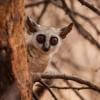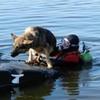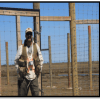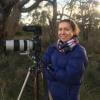Acoustic sensors enable efficient and non-invasive monitoring of a wide range of species, including many that are difficult to monitor in other ways. Although they were initially limited in application scope largely due to cost and hardware constraints, the development of low-cost, open-source models like the Audiomoth in recent years has increased access immensely and opened up new avenues of research. For example, some teams are using them to identify illicit human activities through the detection of associated sounds, like gunshots, vehicles, or chainsaws (e.g. OpenEars).
With this relatively novel dimension of wildlife monitoring rapidly advancing in both marine and terrestrial systems, it is crucial that we identify and share information about the utility and constraints of these sensors to inform efforts. A recent study identified advancements in hardware and machine learning applications, as well as early development of acoustic biodiversity indicators, as factors facilitating progress in the field. In terms of limitations, the authors highlight insufficient reference sound libraries, a lack of open-source audio processing tools, and a need for standardization of survey and analysis protocols. They also stress the importance of collaboration in moving forward, which is precisely what this group will aim to facilitate.
If you're new to acoustic monitoring and want to get up to speed on the basics, check out these beginner's resources and conversations from across the WILDLABS platform:
Three Resources for Beginners:
- Listening to Nature: The Emerging Field of Bioacoustics, Adam Welz
- Ecoacoustics and Biodiversity Monitoring, RSEC Journal
- Monitoring Ecosystems through Sound: The Present and Future of Passive Acoustics, Ella Browning and Rory Gibb
Three Forum Threads for Beginners:
- AudioMoth user guide | Tessa Rhinehart
- Audiomoth and Natterjack Monitoring (UK) | Stuart Newson
- Help with analysing bat recordings from Audiomoth | Carlos Abrahams
Three Tutorials for Beginners:
- "How do I perform automated recordings of bird assemblages?" | Carlos Abrahams, Tech Tutors
- "How do I scale up acoustic surveys with Audiomoths and automated processing?" | Tessa Rhinehart, Tech Tutors
- Acoustic Monitoring | David Watson, Ruby Lee, Andy Hill, and Dimitri Ponirakis, Virtual Meetups
Want to know more about acoustic monitoring and learn from experts in the WILDLABS community? Jump into the discussion in our Acoustic Monitoring group!
Header image: Carly Batist
No showcases have been added to this group yet.
- @diyaquanauts
- | he / him
Digital nomad, software developer, running mechatronic engineering firm in Seychelles to assist ocean conservation groups.

- 0 Resources
- 10 Discussions
- 9 Groups
- 0 Resources
- 0 Discussions
- 8 Groups
University of Adelaide

- 0 Resources
- 10 Discussions
- 17 Groups
- @pbull
- | he/him
DrivenData
Engineer and AI for Good leader working on bringing machine learning tools to social impact organizations.

- 0 Resources
- 1 Discussions
- 8 Groups
- 0 Resources
- 0 Discussions
- 4 Groups
- @ronanwallace
- | He/Him
Research scientist developing conservation technology in environmental monitoring and cultural preservation.
- 0 Resources
- 0 Discussions
- 5 Groups
- 0 Resources
- 0 Discussions
- 1 Groups
- 0 Resources
- 0 Discussions
- 6 Groups
TerrOïko
I am an ecological data engineer at Terroïko, where I work on OCAPI, a platform for semi-automatic camtrap data annotation, biodiversity data interoperability and biodiversity indicators.


- 0 Resources
- 10 Discussions
- 6 Groups
- @shana
- | she/her
I am a Senior Research Scientist in the Department of Human Centered Design and Engineering at the University of Washington. I am a researcher with the eDNA Collaborative and Co-Director of the Pacific Marine Energy Center.

- 2 Resources
- 2 Discussions
- 8 Groups
- @douggillespie
- | he/his
University of St Andrews
PAMGuard software developer
- 0 Resources
- 3 Discussions
- 5 Groups
- @catwasp
- | She/her
- 0 Resources
- 0 Discussions
- 19 Groups
Are you ready for this year's #Tech4Wildlife Photo Challenge? In anticipation, we're counting down our ten favourite entries from last year. Do you think you can top these?
1 March 2017
The Conservation Leadership Programme (CLP) is a training and capacity building programme that targets individuals from developing countries who are early in their conservation career and demonstrate leadership...
21 November 2016
Do you work on conserving Neotropical migratory birds? Do you need funding? Why not apply for a grant from the U.S. Fish and Wildlife Service through the Neotropical Migratory Bird Conservation Act's grant program? The...
8 November 2016
Caves don't tend to be well-liked ecosystems, being extremely dark, often quite cramped, and slippery. And the creepy-crawlies that live within them can be the stuff of nightmares. Nevertheless, one's attitude towards...
25 July 2016
More than half of all primate species are endangered, including our closest living relative, the chimpanzee. Could Passive Acoustic Monitoring (PAM) be applied to primates as well as it has been for other taxa? In this...
29 June 2016
Since 2013, volunteer citizen scientists taking part in the Norfolk Bat Survey have generated over 1.2 million bat recordings, making this one of the most extensive high-quality datasets for bats collected by citizen...
5 February 2016
New horizon scanning report published this month identifies 15 emerging threats and opportunities for global biodiversity.
3 February 2016
August 2025
event
September 2025
event
October 2025
November 2025
event
February 2023
event
event
January 2023
event
64 Products
Recently updated products
| Description | Activity | Replies | Groups | Updated |
|---|---|---|---|---|
| Hi cosmicspittle, Many thanks for the pointer, I shall discusss it with our local tech disussion group here tomorrow morning. One of the guy's, the PhD candidate... |
|
Acoustics | 4 years 10 months ago | |
| Hi Wildlabbers, We've got a fascinating paper to show you, as shared with us by Claude Miaud. This study looks at how amphibian... |
|
Acoustics | 4 years 11 months ago | |
| I thought this article might be interesting to people in this group: "It’s common knowledge that bats navigate and search for... |
|
Acoustics | 4 years 11 months ago | |
| Hello to you all, I hope everyone is doing ok during this Covid-19 contingency. Jsut sharing this adaptation for the water proof case for the Audio Moth. https://www.... |
+2
|
Acoustics | 5 years ago | |
| Johnnie, Great. You can get me at work on c.abrahams@bakerconsultants.co.uk Ta, Carlos |
|
Acoustics | 5 years 1 month ago | |
| Hi everyone, Thanks for attending today's episode! You can find all of the collaborative notes at the link below, and we also encourage you to use this thread to connect... |
|
Acoustics | 5 years 1 month ago | |
| Hi everyone, If anyone is looking for the episode's collaborative notes, you can find them here: https://notes.datawrapper.de/p/Tech_Tutors_Episode_3 This doc... |
|
Acoustics | 5 years 1 month ago | |
| Hi all, There is a conversation underway in the "Ethics of conservation tech" group on best practices for responsible ue of... |
|
Acoustics | 5 years 2 months ago | |
| How do we get notified for the next group buy? |
|
Acoustics | 5 years 2 months ago | |
| Hello all, I am new to recording but have been learning about acousting environmental monitoring for several years now. Covid19 has me... |
|
Acoustics | 5 years 2 months ago | |
| Hi Isla, Range at which animals hear sounds depend on 4 things: 1) the frequency (pitch) of the sound of interest. As a rule of thumb, lower frequency sounds travel... |
|
Acoustics | 5 years 3 months ago | |
| We used the following lithium batteries. URL: https://fortebattery.en.made-in-china.com/product/FBDEubqyfGhH/China-C-Size-Lithium-Batteries-Cr26500-Cr26500se-... |
|
Acoustics | 5 years 3 months ago |

































